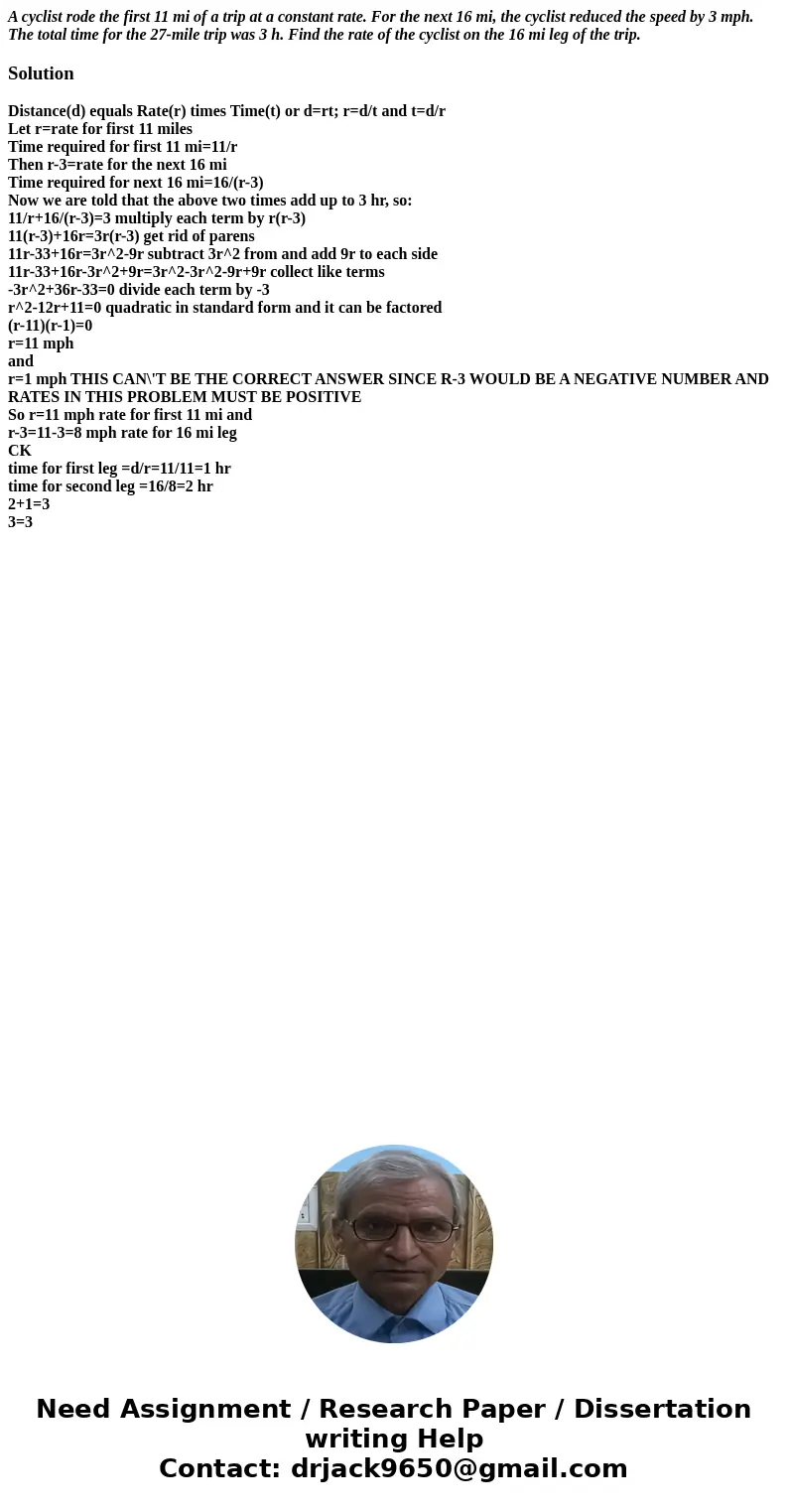A cyclist rode the first 11 mi of a trip at a constant rate
A cyclist rode the first 11 mi of a trip at a constant rate. For the next 16 mi, the cyclist reduced the speed by 3 mph. The total time for the 27-mile trip was 3 h. Find the rate of the cyclist on the 16 mi leg of the trip.
Solution
Distance(d) equals Rate(r) times Time(t) or d=rt; r=d/t and t=d/r
Let r=rate for first 11 miles
Time required for first 11 mi=11/r
Then r-3=rate for the next 16 mi
Time required for next 16 mi=16/(r-3)
Now we are told that the above two times add up to 3 hr, so:
11/r+16/(r-3)=3 multiply each term by r(r-3)
11(r-3)+16r=3r(r-3) get rid of parens
11r-33+16r=3r^2-9r subtract 3r^2 from and add 9r to each side
11r-33+16r-3r^2+9r=3r^2-3r^2-9r+9r collect like terms
-3r^2+36r-33=0 divide each term by -3
r^2-12r+11=0 quadratic in standard form and it can be factored
(r-11)(r-1)=0
r=11 mph
and
r=1 mph THIS CAN\'T BE THE CORRECT ANSWER SINCE R-3 WOULD BE A NEGATIVE NUMBER AND RATES IN THIS PROBLEM MUST BE POSITIVE
So r=11 mph rate for first 11 mi and
r-3=11-3=8 mph rate for 16 mi leg
CK
time for first leg =d/r=11/11=1 hr
time for second leg =16/8=2 hr
2+1=3
3=3

 Homework Sourse
Homework Sourse